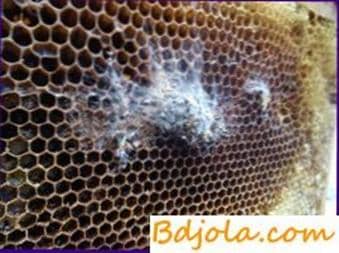
The causative agents of infectious diseases of bees persist for a long time on a variety of subjects, being a constant threat of re-infection, a factor in the epizootic trouble of the apiary or the terrain. That is why in the fight against infectious diseases of any kind, treatment without disinfection does not give positive results, no matter how carefully it was conducted.
Cellular framework is the basis of rational beekeeping. Their disinfection prevents the brood rearing, adult individuals of the family, transfer of pathogens to a distance. At the same time the terms of economic use of honeycombs are extended, their sanitary and hygienic quality is increased.
Disinfection of honeycombs can be preventive in case of eradication of outbreaks of the disease (current) and for fixing treatment (final). At present, this operation is mandatory for ten infectious diseases of bees, five of which (European and American foulbroods, parignites, saccule brood and viral paralysis) are strictly quarantine, and five – with quarantine restrictions (ascosferosis, salmonellosis, septicemia, nosematosis and varroatosis).
Light-melting properties of honeycombs, their weakness to mechanical influences require strictly prescribed, gentle disinfection regimes.
Therefore, disinfection requires special attention and is carried out according to special instructions (Instruction on disinfection, disinfection, disinfestation and deratization in apiaries, Moscow, 1982, Instruction on measures to prevent and eliminate infectious diseases of bees, Moscow, 1985).
Disinfection of honeycombs includes the following technological processes: sorting and mechanical cleaning; de-processing and exposure of honeycomb frames in a given mode of disinfection (exposure); removal of disinfectants followed by inactivation of residues or deodorization of cells. Treatment with disinfectant solutions (their temperature is 35-40 њ C) is carried out on warm days.
When sorting combs, they take into account the quality of their detuning, contamination and age. In any case, cells less than five years old, suitable for further use, are to be decontaminated. They should not contain the remains of the deceased, especially from infectious diseases, brood (crusts in foulbroods), stains of diarrhea (with nosematosis), ascosferous dead larvae. Particular account and more strict culling are subject to honeycombs from slow-developing, weak and especially sick families.
Mechanical cleaning of honeycomb frames is an important part of the work in the disinfection, since diarrheal stains, propolis-wax stratification, mud on the frame and cell walls reduce the quality of disinfection, since the contamination, on the one hand, serves as a cover for pathogens, and on the other hand they reduce disinfecting activity of the used means.
The bars and slats of the frames moisturize, and then clean with a sharp knife, chisel or broken glass and wipe with a weak des solution or warm water. Strongly worn sections of honeycombs are scraped off by a chisel before the mediastinum or cut out. From the cells shake out the dirt and other residues. Carry out the necessary current repair of the frames.
Disinfect honeycomb in inaccessible to bees and ponds, and in well-equipped beekeeping farms on specially equipped desposites, in sewers, where appropriate equipment is provided for their treatment after disinfection (removal of disinfectants, washing, drying, degassing).
Store honeycomb in a special sotohranilishche equipped with mobile shelves. On the shelves, honeycomb frames are suspended at a distance of 5-7 cm from each other or stored in casings, chests. Walls and ceilings in the pond after normal plaster are covered twice with oil paint, and the floor is covered with fine dry sand.
Рецепт пыльцы. Медовые конфеты.
Diseases of bees